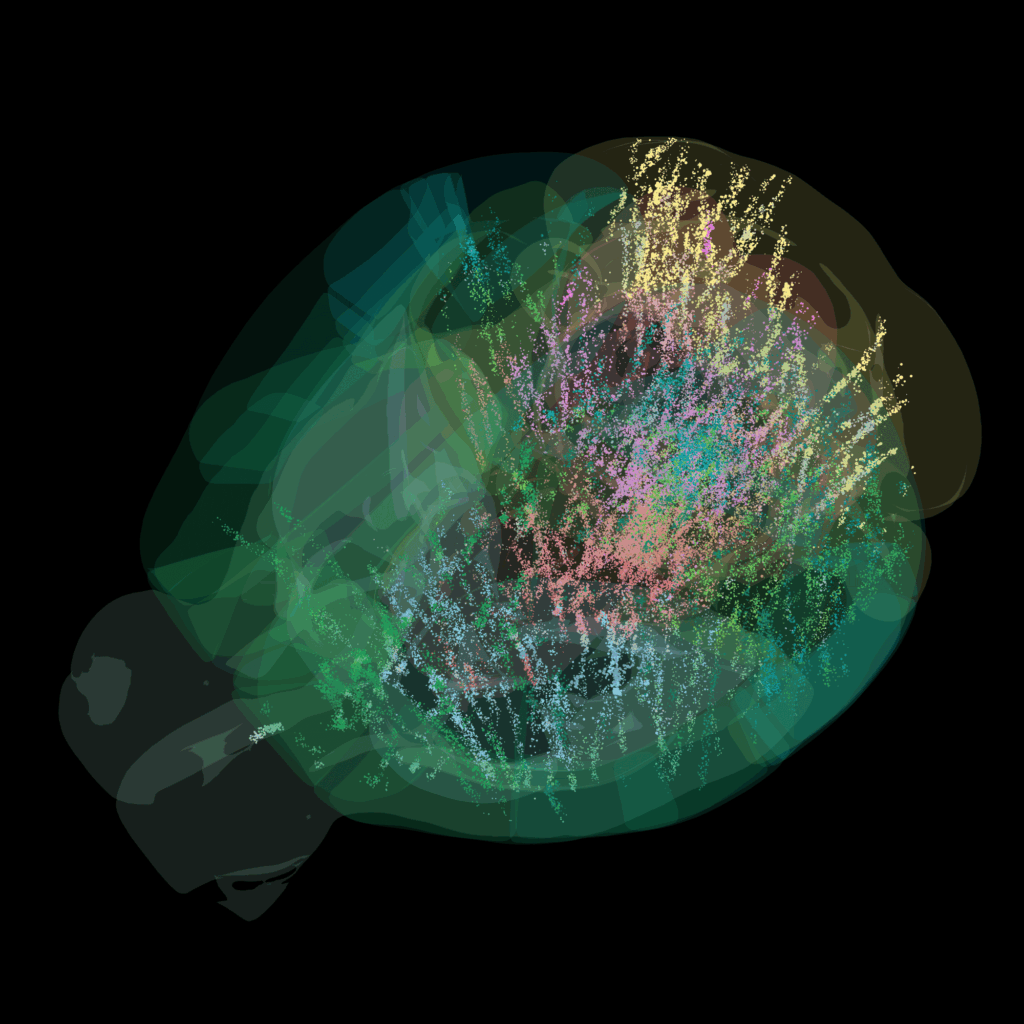
For centuries, philosophers have pondered the origins of decision-making in the human mind. Is there a precise moment when a decision is made? Neuroscientists have long sought to answer this question by examining small brain regions, but now, a groundbreaking scientific collaboration has produced the first comprehensive map of brain-wide activity during decision-making. This achievement captures nearly the entire spectrum of cognitive processes.
The result is a vivid depiction of the brain in action. “The decision-making activity, and particularly reward, lit up the brain like a Christmas tree,” said Alexandre Pouget, a computational neuroscientist at the University of Geneva and co-founder of the International Brain Laboratory (IBL).
A Global Collaboration in Neuroscience
The breakthrough emerged from the International Brain Laboratory (IBL), a collective effort involving 22 labs across Europe and the U.S. Each lab trained mice to play a seemingly simple video game: maneuvering a striped circle toward the center of a screen using a tiny LEGO steering wheel. The faster and more accurately the mice moved, the sweeter the reward of sugar water.
However, the task had a twist. Sometimes the target was so faint it was barely visible, requiring the mice to rely on past experiences and expectations about the target’s location. This setup was ideal for studying the brain’s complex ability to integrate current sensory information with past experiences to make decisions.
Each lab focused on different brain regions but adhered to rigorous protocols, resulting in a dataset of unprecedented scope: over 620,000 neurons recorded from 139 mice across 279 brain regions. “This had never been done before,” noted Alejandro Pan Vazquez, a research scholar at Princeton University.
Rethinking Decision-Making in the Brain
The findings challenge traditional views of decision-making in the brain. For decades, scientists believed that specific brain areas acted as decision hubs. However, the new data suggests otherwise. “If there’s one thing we’ve discovered from this work,” Pouget told New Scientist, “it’s that no one brain area ‘decides’. Decision making involves tens of areas that decide through a kind of consensus.”
This distributed process begins before a decision is made. Neural signals associated with upcoming choices start building before any movement occurs, sometimes even before the stimulus appears on the screen. These signals were not limited to the frontal cortex or parietal lobe, traditionally associated with cognition. They extended to areas involved in movement, vision, reward, and even the hindbrain and cerebellum.
“One of the important conclusions of this work is that decision-making is indeed very broadly distributed throughout the brain, including in regions that we formerly thought were not involved,” said Ilana Witten, a neuroscientist at Princeton. This includes deep brainstem areas like the gigantocellular reticular nucleus, which showed strong signals linked to the mice’s choices.
The Role of Intuition
The second of two Nature papers released by the IBL focused on expectation, or the brain’s ability to predict future events based on past experiences. Here, too, signals were widespread, appearing shockingly early in the process, even as sensory information traveled from the eye to the thalamus, before any conscious awareness.
“This might correspond with what we perceive as intuition,” said Pouget. In this view, the brain is constantly predicting, actively shaping perceptions based on expectations rather than passively receiving information.
“This suggests that it is our own behavior and subjective experience that shapes what we expect to see next, rather than the true, objective state of the world,” added Laurence Hunt, a neuroscientist at the University of Oxford, according to New Scientist.
A Model for Collaborative Neuroscience
Beyond the scientific findings, the IBL’s approach is noteworthy. In a field often characterized by small sample sizes and fragmented findings, the IBL demonstrated what a coordinated, reproducible neuroscience experiment could achieve. Labs followed the same behavior protocols, shared analysis pipelines, and even sent brain samples to a centralized histology lab at University College London.
“The brain is the most complex structure we know of in the universe,” said Tom Mrsic-Flogel, director of the Sainsbury Wellcome Centre in London. “Understanding how it drives behavior requires international collaboration on a scale that matches that complexity.”
The outcome is more than a study—it’s a benchmark, a resource, and a proof of concept. “All data from these studies, along with detailed specifications of the tools and protocols used for data collection, are openly accessible to the neuroscience community for further analysis and research,” said Anne Churchland of UCLA.
Future Directions in Brain Research
While the project focused on a single decision-making task, researchers plan to expand their approach. Future studies may explore how the brain navigates memory, attention, or mental illness. Already, the findings could inform research into conditions like autism and schizophrenia, where disruptions in expectation and prediction may be significant.
“Mouse models of autism suggest these animals have difficulties updating their prior expectations,” said Pouget, “which fits with what we see behaviorally in people.”
The IBL aims to involve more scientists in its efforts. “[This] marks a beginning, not the grand finale,” said Tatiana Engel, a neuroscientist at Princeton. “The IBL has set the highest standards for sharing high-quality data, tools, and resources to accelerate scientific progress. Now, the next horizon is to extend this collective expertise to the entire community.”
The brain, it turns out, doesn’t make decisions in isolation—and neither should science.







